














FM CHAIRS
Hewson Duffy ’25
Kaitlyn Tsai ’25
DESIGN CHAIRS
Sami E. Turner ’25
Laurinne Jamie P. Eugenio ’26
MULTIMEDIA CHAIRS
Julian J. Giordano ’25
Addision Y. Liu ’25
FM EDITORS-AT-LARGE
Yasmeen A. Khan ’25
Jade Lozada ’25
FM ASSOCIATE EDITORS
Io Y. Gilman ’25, Ciana J. King ’25, Sage S. Lattman ’25, John Lin ’25, Graham R. Weber ’25, Sam E. Weil ’25
Jem K. Williams ’25, Sazi T. Bongwe ’26, Ellie S. Klibaner-Schiff ’26, Adelaide E. Parker ’26, Rose C. Giroux ‘26, Maeve E. Brennan ‘26
Dina R. Zeldin ’25
FM DESIGN EDITORS
Julia N. Do ’25
Olivia W. Zheng ’27
Xinyi C. Zhang ’27
FM MULTIMEDIA EDITORS
Briana Howard Pagán ’26
Lotem L. Loeb ’27
COVER DESIGN
Xinyi C. Zhang ’27
PRESIDENT J. Sellers Hill ’25
MANAGING EDITOR
Miles J. Herszenhorn ’25
ASSOCIATE MANAGING EDITORS
Claire Yuan ’25
Elias J. Schisgall ’25
Dear Reader,
Although it is fall, and ‘tis the season of gradual decay, the theme of this glossy is viral. Viral, as in spreading, growing, circulating, influencing.
This brings us to our stunning scrut, in which AML and KJK cover those making Harvard go viral : student influencers. Through conversations with these social media personalities, they uncover the answers to questions about what it is like having your life at college on display, the allure of influencing, and the ethics of proifting off the Harvard name.
Next, CJK writes about the Rights of Nature, a burgeoning legal movement taking root across the country and here at Harvard Law School. In conversation with Professors Jill Lepore and James Salzman, CJK asks what it means to consider plants and natural features as legal persons — and how this can prevent environmental destrcution.
VRW spreads the word about the reopening of the Eliot darkroom, spearheaded by Classics professor and Eliot faculty dean David Elmer. Driven by his passion for photography, Elmer is now teaching a house seminar — one of the first to be offered in several years – on film photography.
When a fish in the Cabot aquarium died, word spread rapidly, and, thankfully for us, reached the ears of CES, who adopted her grouchy funeral beat persona and wrote a spectacular levity about the fish’s funeral. No words can really capture the hilarity and whimsy of the piece or the situation. You just have to read it yourself.
Finally, closing out this issue are two incredible endpapers from AJP and KJK. In the first, AJP reflects on what it means to love, and how bearing witness to a person’s joy, sadness, growth, and everything in between is the most profound act of it. KJK reflects on what it means to have a “passion” and how, over the course of several years, she has found that maybe the point isn’t to have a passion, but to embody it.
So there you have it: our first glossy. Give it a read. Share it with a friend (or two, or three). Make it go viral.
Sincerely Yours,
HD & KT

INFLUENCERS —As more and more students take up the role of ‘Harvard influencer,’ social media success is increasingly shaping their life on campus. Yet student internet stardom still feels like uncharted territory.
SEE PAGE 8

FISH FUNERAL — “Fish Funeral Friday,” read the flier, which was black. Finally, I thought. A community event that’s up my dimly-lit alley. SEE PAGE 22

NOTEWORTHY PASSION — My notes collection became something new: proof that I care. SEE PAGE 26
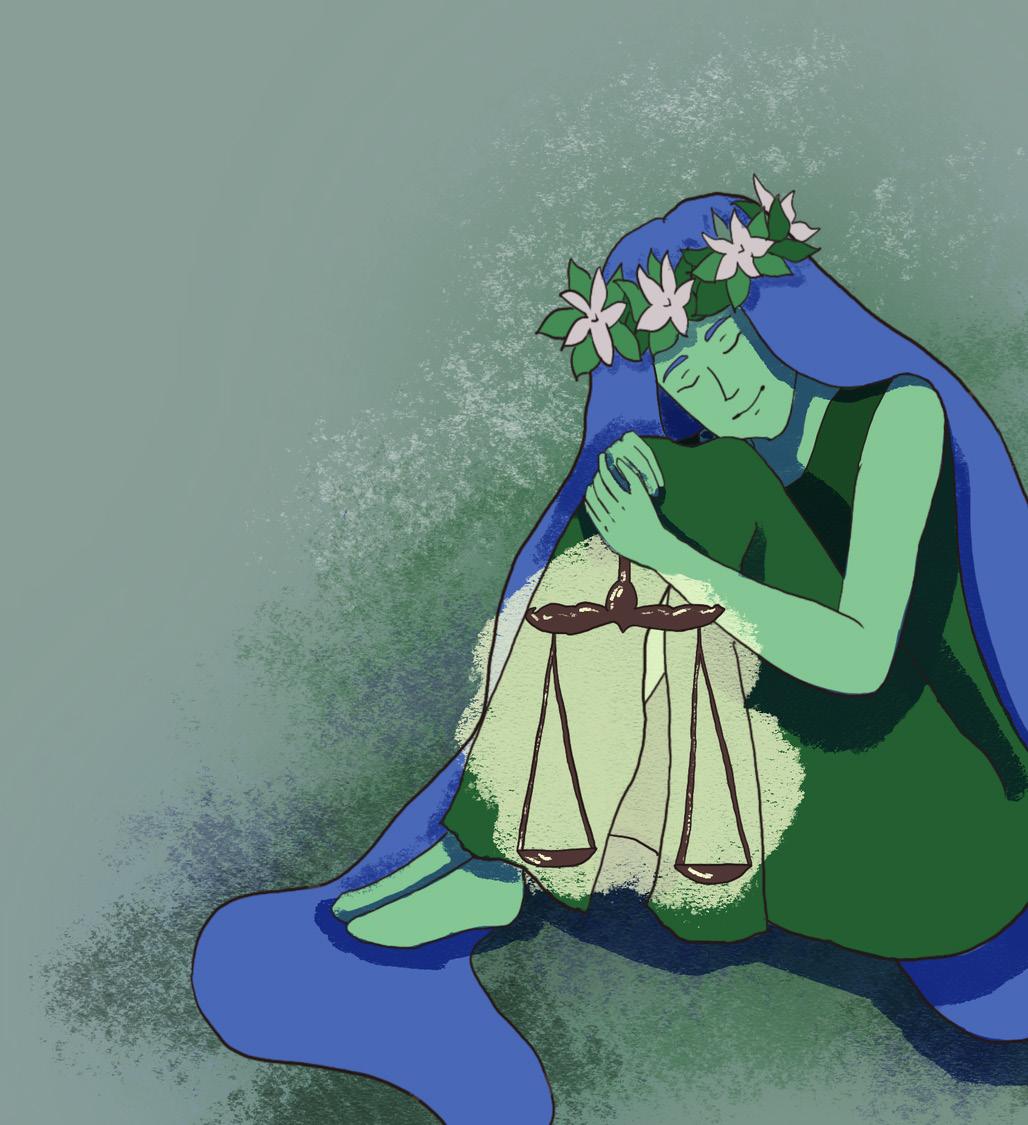
RIGHTS OF NATURE —The burgeoning legal movement argues that granting legal personhood to wildlife and natural features could help stave off environmental destruction. SEE PAGE 4

ELIOT DARKROOM— Classics professor and Eliot House faculty dean David Elmer has resurrected the abandoned Eliot darkroom and is teaching a House seminar on film photography. SEE PAGE 20

ON BEARING WITNESS — When faced with uncomfortable displays of grief or jealousy-inducing accomplishments, bearing witness is the bravest act of love. SEE PAGE 24
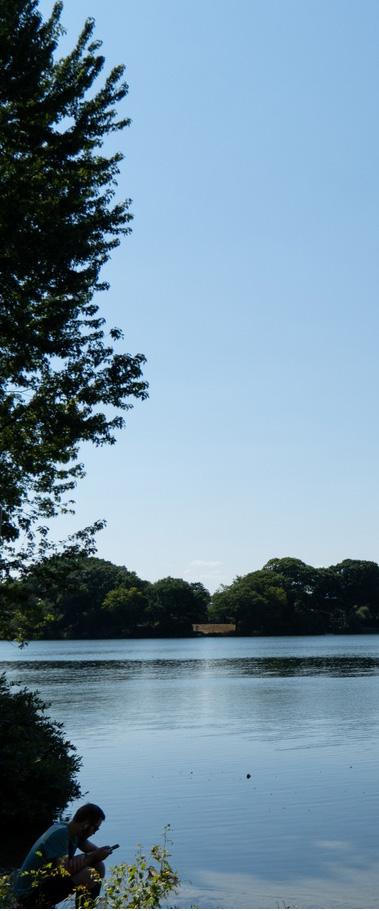

A LEGAL MOVEMENT —In their new course, “The Rights of Nature,” visiting Law School professor James Salzman and American History and Harvard Law School professor Jill Lepore investigate a burgeoning American legal movement known as the Rights Nature. The movement argues that granting legal personhood to wildlife and natural features could help stave off environmental destruction.
CIANA J. KING CRIMSON STAFF WRITER
visiting Law School School professor as the Rights of wildlife and natural


Under the rights of nature framework, a tree like this one could be legally recognized as a person.
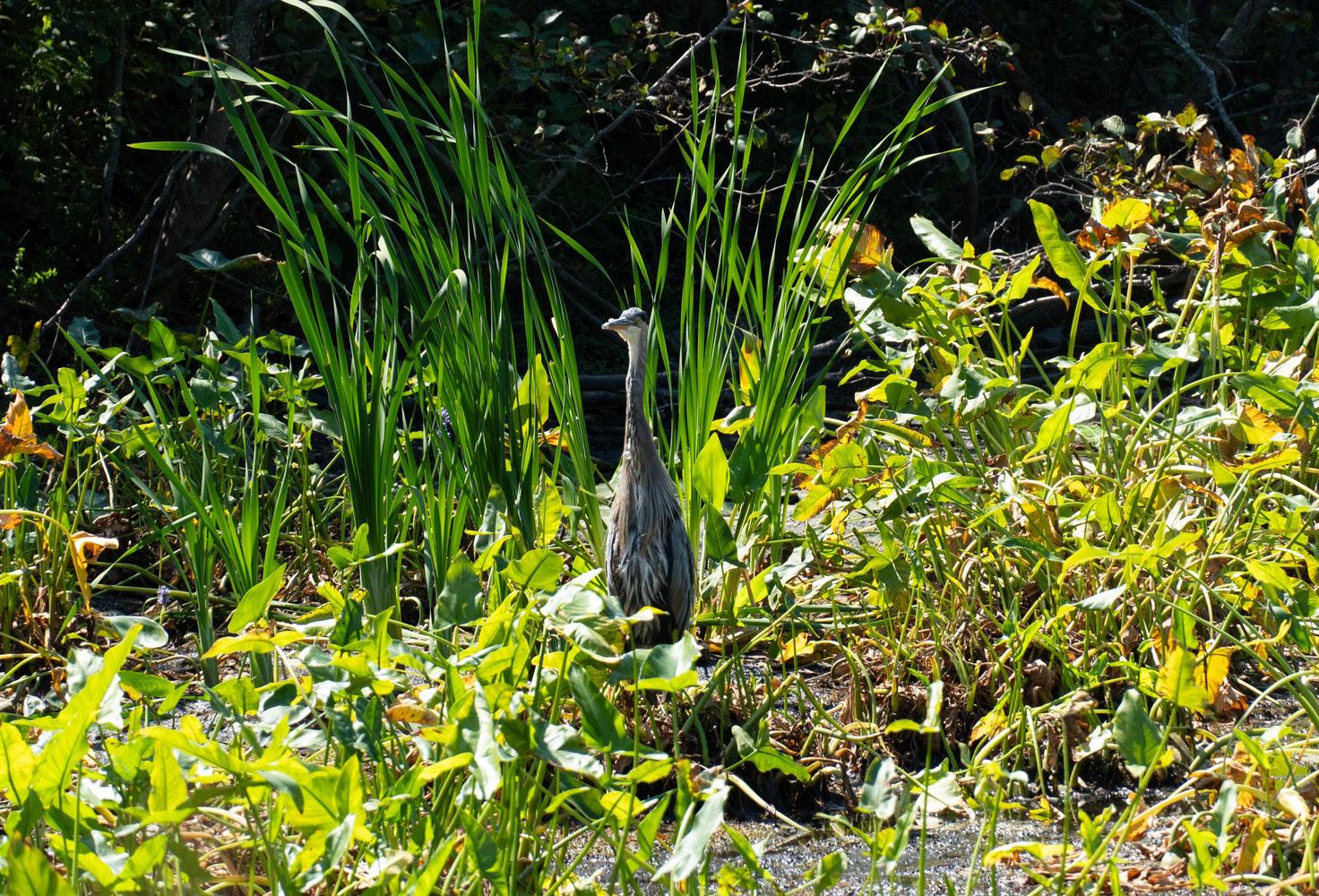
Rights
| PAGE DESIGNED
argues that granting legal personhood to wildlife and natural features could help stave off environmental destruction.
So, you may have read The Lorax when you were growing up, and you will recall that the great declaration of that book is a Lorax standing at a stump and saying, ‘I speak for the trees,’” says visiting Law School professor James Salzman. Then, his smile fades. “Our legal system doesn’t really work that way.”
In their new course, “The Rights of Nature,” Salzman and American History and Harvard Law School professor Jill Lepore explore just that: the “Lorax problem.” Their course investigates a burgeoning American legal movement known as the Rights of Nature. Drawing on international and Indigenous laws, this emerging field argues that granting legal personhood to wildlife and natural features could help stave off environmental destruction.
For Lepore, this course is not an endorsement but an exploration. She admits that, like her students, she is “genuinely uncertain” whether the new framework could strengthen existing environmental protections and succeed in its mission to mitigate climate change.
“There’s not a single ‘Rights of Nature’ approach. It’s a bag of ideas, and some of those ideas are more promising than others,” says Lepore.
“Rather than wait around and then years later teach a course on what it was, we try to imagine what it could be,” she adds.
Though Salzman and Lepore can’t yet predict the tangibility of a Rights of Nature approach in the United States, both agree that success is subjective.
“One can look at Rights of Nature cases in the U.S. to date, and say it’s been a failure because the cases have failed in a court of law,” Salzman says. “Maybe the court of law is not actually where the action is taking place, and the court of public opinion is where the focus is.”
Due to this wide range of student perspectives — the course is offered jointly with HLS and the Faculty of Arts and Sciences — a major component of the class is its end- of- year nature summit. The professors hope to challenge their students to do — and not just read.
Seated in the hallowed benches of Boston’s Old State House, students,
representing the competing interests of one of a myriad of entities — from the Cape Cod seashore to pollinators to the National Association of Home Builders — will work together to write an amendment to the Massachusetts Constitution.
How will they build their case?
“We say, ‘Well, trees aren’t people and forests aren’t people.’ Well, corporations aren’t people either. And we have no problem giving them rights — a lot of rights,” Salzman says.
“The idea of Rights of Nature has enormous rhetorical power,” he adds.
In contrast to canonical environmental law, the Rights of Nature framework expands what’s possible.
“Environmental law, in essence, is very much a balancing act. How much pollution do we want to allow versus economic development?” he says. “Rights are a different matter. Rights are absolute.”
It is no coincidence, Salzman argues, that Rights of Nature legal “wins” have played out in the global South and countries with large Indigenous populations, from Ecuador to New Zealand, places and people disproportionately affected by climate change.
“The nation-states with the lowest emissions have the greatest damages. One of the ideas behind Rights of Nature is that nothing else is working to stop the global North from continuing on the path,” says Lepore. “We need a new, bigger, better idea. That idea, in this case, really comes from Indigenous law.”
Lepore explains that in the U.S., organizing law and politics around rights tends to promote absolutism, the idea that the rights of different entities are destined to clash. In other countries and in Indigenous legal systems, rights are more easily shared. “We may have hit a wall with a trapped way of thinking about rights that’s leading to a lot of political tragedy,” Lepore says.
After decades stuck in “partisan gridlock,” Salzman is hopeful that the Rights of Nature framework helps turn the corner.
Students, Lepore
thinks, should be asking themselves, “Is this approach better than or does it interfere with environmental laws that currently exist?”
Many students, Salzman and Lepore
“Rights are a different matter. Rights are absolute.” — James Salzman
note, joined the class frustrated with traditional environmental law. While the course might not have all the answers, Lepore sees a silver lining.
“‘I wonder what if?’ is a different way to feel than ‘What the hell!’” she says.
Visiting Harvard Law School Professor James Salzman sits for a portrait.
LOTEM L. LOEB — CRIMSON PHOTOGRAPHER



As more and more students take up the role of ‘Harvard influencer,’ social media success is increasingly shaping their life on campus. Yet student internet stardom still feels like uncharted territory.



BY KATE J. KAUFMAN AND AZUSA M. LIPPIT CRIMSON STAFF WRITERS
In a neuroscience lecture at the end of her sophomore fall semester at Harvard, Soleil E. Golden ’24 took out her phone to film a video clip.
“What are you recording for?” a student sitting next to her asked.
“Oh, I’m vlogging for my TikTok,” Golden replied, after which the student pulled up her profile (which now has more than 500,000 followers). She promptly suggested the two meet for coffee. The student turned out to be the president of the Exister Society — or the “X”, a women’s final club. Shortly after, Golden had completely bypassed the semester-long “punch” process and was initiated into the club the next weekend.
“I didn’t go through a single round. It gave me an immense amount of privilege in that regard, having a social media platform,” Golden says. “Some people were not happy because they had to go through all of punch and had to see their friends get eliminated, and then I just got in without even being interviewed.”
A representative of the Exister Society declined to comment on the punch process in previous years because Golden joined before any current members were in the organization.
Golden’s story is unique, but as more and more students take up the role of ‘Harvard influencer,’ social media success is increasingly shaping students’ life on campus.
The road to influencer status typically starts with the same formula: an
emotional, moving video of a high school senior opening their Harvard acceptance letter draws millions of viewers on YouTube or TikTok. Those who choose to continue making videos quickly learn that the Harvard name is an unparalleled marketing tool — garnering them tens of thousands of followers hoping for a glimpse of the most exclusive college experience in the country.
John A. Fish ’21-22, one of the pioneers of Harvard social media content, says the University’s engagement boost is undeniable.
“My first viral videos all had Harvard in the title,” Fish says. “Harvard pretty much gave me my career.”
He now has nearly one million YouTube subscribers.
As these students expand their followings, they approach celebrity status. Some receive free MacBooks or $10,000 from one TikTok brand sponsorship. They get stopped by strangers in public and field frequent interview requests from zealous (student) journalists.
But as the more than 20 Harvard influencers interviewed for this piece attest, student internet stardom still feels like uncharted territory, forcing them to consider questions that no Harvard student has had to ask before.
How do they navigate severe judgment, both online and on campus? Do they want to springboard from their social media success and start a fullfledged admissions consulting business? When Harvard enters a global spotlight, are they free to portray the University however they want? Who is really
benefiting from the college influencer economy, if anyone?
No one’s quite figured it out.
‘I’ve Seen You On TikTok’
When Mary Catherine H. LaPlante ’25 arrived on campus as a freshman, she was able to skip the typical first-day introductions — her internet presence preceded her.
“Initially when I came to Harvard, a lot of my reputation on campus was as the girl who went viral,” LaPlante says.
“People would come up to me like, ‘Oh my gosh, I’ve seen you on social media,’ probably once a day at least,” she adds.
For many influencers, the things they’re lauded for online change the fabric of their in-person social lives. As much as selfies with strangers and online clout might boost their ego, anonymous online vitriol can call into question the authenticity of their interactions with fellow students.
Before even moving into Harvard Yard, Santi Salazar ’26 had built an empire of more than one million TikTok followers by posting study videos in Spanish. Seemingly, he was just a few crimson-hued student life videos away from astronomical growth.
But when Salazar arrived at Straus Hall two years ago, his account went dark.
“Having a camera around, recording all of it would be weird — for me, at least,” Salazar says. “I wanted to also meet people that didn’t know me through that account.”
“I wanted to be my own person, away from that acharacter that sometimes you have to play on social media to become popular.” — Santi Salazar ’26

Golden is a neuroscience concentrator at Harvard College who has garnered a TikTok following of over 500,000 fans.
He says he was initially just “burnt out” from making so much content in high school, but as college went on, the idea of starting up again grew less and less attractive. He said the potential impact on his social life was one of the biggest reasons for abandoning his account.
“I wanted to be my own person, away from that character that sometimes you have to play on social media to become popular,” he adds.
Salazar also noticed a “stigma” among the student body about Harvard social media content. “A lot of Harvard students see that and are like, ‘Oh my god, that’s so unrealistic,’ or ‘That is so not the way that our lives look,’” he says.
Helen L. Piltner ’25, who has more than 50,000 YouTube subscribers, agrees that many students are judgmental. “They have an internalized — not hatred, but somewhat of a dislike toward the content creators on campus,” Piltner says. “Because they think all they’re trying to do is flaunt the fact that they are at an Ivy League.”
The more you purport to speak on behalf of all Harvard students, it seems, the more your peers might judge you.
Harvard students “hate on a very specific kind of creator, and I’m also one of the people who hates on those creators,” Golden says.
“I have them blocked,” she adds. Most influencers agreed that the judgment manifests primarily on Sidechat, an anonymous social media app for undergraduates.
Olivia Zhang ’27, who recently surpassed 100,000 TikTok followers for her lifestyle and productivity videos, says Sidechat hate has become routine.
“Every year, somebody copy-pastes the same message, like: ‘Incoming freshmen, don’t do content creation, everybody hates the content creators, it’s so cringey,’” she says.
When Elise M. Pham ’26, who has more than 900,000 followers across YouTube, TikTok, and Instagram, opened Sidechat in the spring of her freshman year, it was flooded with hate comments about her videos — some with hundreds of upvotes.
“I basically became a pretty good
trend on Sidechat for a good two weeks or so, and then people made a lot of crazy assumptions about me,” Pham says. “Or they made a lot of lies, like, ‘She’s cheating on her boyfriend,’ ‘She bought 200,000 followers,’ ‘She’s coming from a rich family.’ I was like, whoa.”
Pham says the negativity on Sidechat made her consider discontinuing her content altogether.
“There was a good few weeks where I just didn’t go to Annenberg, because I was just really socially anxious,” she says.
Offline, campus influencers say they rarely hear anything other than support and praise from their peers. Still, they say they’re wary of how their internet fame precedes them, especially in what some see as an already superficial social environment.
“It’s not so much that people want to be in your videos — it’s more so people want to be around you because they associate you with the cool Harvard social media brand,” says Indiana Vargas Avellan ’27, who has gained over 100,000 followers on TikTok since finding her audience during college applications.
With everything from your morning routine to your college admissions essay at every Sidechat troll’s fingertips, is there any way to avoid judgment and guarantee authentic connection?
For Aaron R. Thompson ’27, who now has more than 32,000 TikTok followers, the answer is posting lighthearted content.
“I don’t think anything’s ever been cringey for me because I’m making a joke of myself, so you can’t really make me feel any worse,” he says.
“The videos I post are me. I’m not trying to portray anything else,” he explains.
Thompson’s approach also helps to grow a loyal audience, according to Golden. “I noticed that the more you let your personality show through in your videos, even if you have a particular niche, they will become more absorbed in who you are as a person,” she says. “I was able to turn my TikTok account essentially into a personal diary.”
But authenticity isn’t the only answer. For Pham, who says she is two
| PAGE DESIGNED BY XINYI C. ZHANG — CRIMSON DESIGNER
different people in person and online, the judgment seemed to disappear as the numbers grew.
In the year and a half since the anonymous posts about Pham circulated, her accounts have skyrocketed in engagement — and the tune about her content has changed.
“She has that dog in her,” Thompson says. “I don’t think anybody can call it cringe if it works.”
TikToker A. Ada Cruz ’24 says she initially found vlogging “cringey.”
“But then I’m like, ‘It’s actually paying my rent,’” she says. “And I’m like, OK, I can be cringey.’”
Perhaps financial success acts as a bulwark against peer judgment — which, for many Harvard influencers, is plentiful.
Come budget my income with me as a college sophomore,” reads the caption of a TikTok video Pham posted in March 2024. She smiles at the camera before cutting to a spreadsheet, where she types her total income for the month:
$46,015.
The video put numbers to the growing rumor that between classes and psets, some college students are leveraging their social media success for staggering profit.
“She’s making that bank that all of us want,” Jenny E. Ng ’28 says.
For many budding influencers, the first paychecks come from making advertisements. A TikTok of Cruz shopping for her favorite snacks at CVS brought in a $2,800 paycheck. A 14-second video of Golden wearing a pair of Reebok shoes, posted on both Instagram and TikTok, earned her $12,000 last November.
More followers and engagement gives influencers increasing leverage to negotiate brand deals — and a deluge of companies eager to work with them. Harmoni Turner ’25, a viral Harvard basketball player, uses a management team to maximize her profit from social media. “I told them from the get-go, I was like, ‘Listen, I want to make a lot of
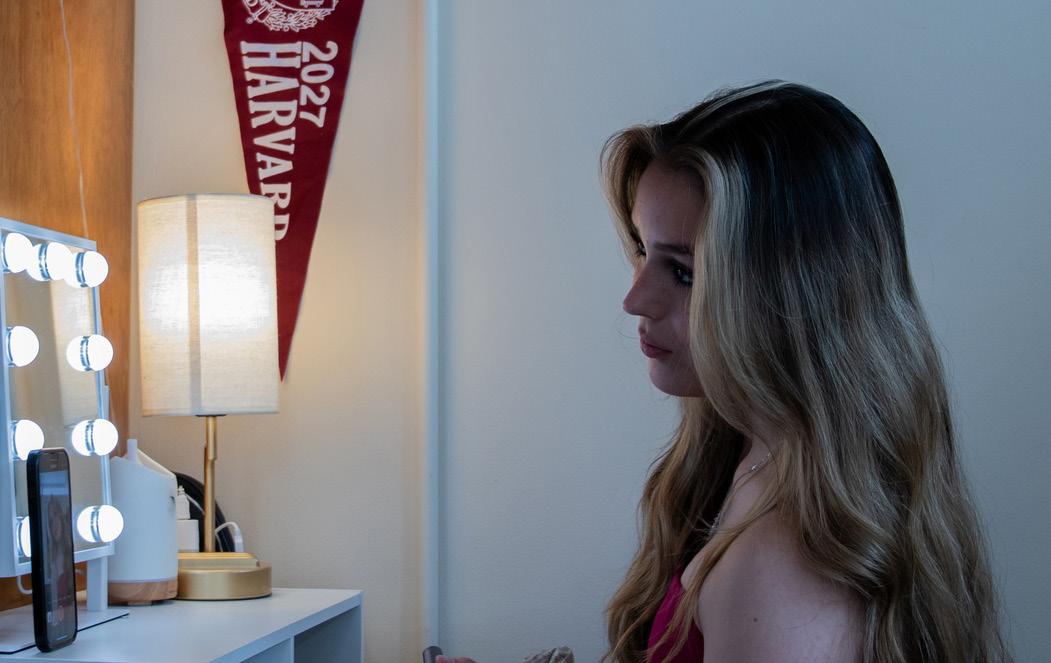
Vargas Avellan has gained over 100,000 followers on TikTok since finding her audience during college applications.
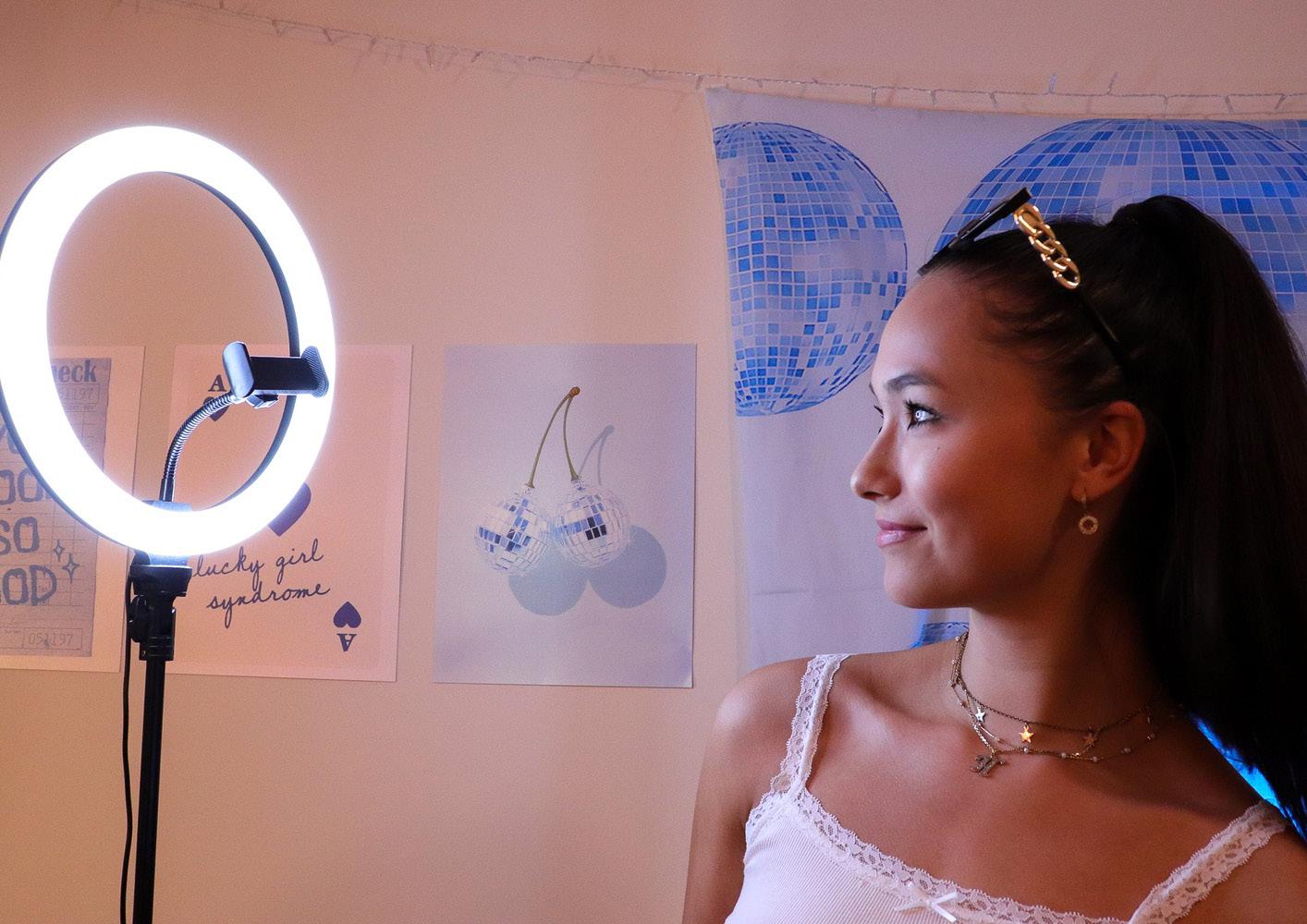
Piltner says that influencers should not just create content for views or money, but for a deeper underlying mission.
“I never want to be one of those creators who do anything for the money.” — Olivia Zhang ’27
money. I want to be wealthy,’” she says.
In selecting brands to work with, students weigh factors like relevance to their audience and genuine interest in the product. “I never want to be one of those creators who do anything for the money,” Zhang says. She has previously made advertisements for brands such as Microsoft, Grammarly, and Tinder. “I am very adamant about working with brands if I actually use their products or I really like what they stand for.”
In addition to brand sponsorships, creators can make money directly from social media platforms through view monetization — but many say it’s rarely lucrative. Vargas Avellan, who receives tens of thousands of views on her college lifestyle videos, says she “will get maybe 50 bucks every two weeks” from monetizing TikTok views.
Vargas Avellan has gained over 100,000 followers on TikTok since finding her audience during college applications.
Vargas Avellan has gained over 100,000 followers on TikTok since finding her audience during college applications. By Matteo L. Cagliero
It doesn’t help that only videos over one minute long are eligible for monetization on TikTok. When one of her videos goes unexpectedly viral, Golden thinks to herself, “Shit, I hope it’s over one minute.”
“I’ve had videos that have literally gotten millions of likes, and they’re 59 seconds,” she says.
Some creators choose not to bother with this system of monetization entirely. Zhang, for example, only does brand deals.
Zhang has previously made advertisements for brands such as Microsoft, Grammarly, and Tinder and
says she is adamant about only working with brands if she uses their products or likes what they stand for.
Zhang has previously made advertisements for brands such as Microsoft, Grammarly, and Tinder and says she is adamant about only working with brands if she uses their products or likes what they stand for. By Cam E. Kettles
Ultimately, Golden says being a creator on its own doesn’t offer financial stability. “I’ve never made what would be considered a livable wage off of TikTok. If it was my sole source of income, I would be really fucked, because it is so unpredictable and sporadic,” she says. Today, Pham’s income is neither from view monetization nor brands. Pham’s videos, including the budget breakdown, never stretch past 59 seconds, and she no longer posts advertisements. “Now, I decline all sponsorships,” Pham says. “I had $5-10K offers, and I was like, ‘No.’”
Where, then, does monthly income on the order of $46,000 come from?
“I’m really focused on growing my personal brand, because that is a lot more sustainable for me in the long term,” Pham says.
By ‘personal brand,’ she means Ultimate Ivy League Guide, the college admissions counseling service she founded and owns. “Since March, I got a co-owner, and then we scaled. Now our team is around 10 full-time employees, and then we have a legal team, media team, and finance team.”
Pham is taking a gap semester this fall to launch a new program for the company. “Hopefully by the end of the semester the program will be successful, and I’ll have the right systems in place and the right training in place so that I can give my management role to
someone else and focus on more high leverage executive decisions, rather than quality checking coaches,” she says.
She’s not the only Harvard student who has turned virality into a business around college admissions coaching.
Kelsey A. Hoskin ’21, a current medical school student who goes by the moniker ‘Harvard Honey’ on TikTok, has published two books about getting into college. She charges high schoolers $12,975 to be their personal coach, or they can pay $675 for a 1-hour private strategy session.
Pham and Hoskin both say that their social media presences are now tools to promote their business ventures. “I definitely see social media as a way to just leverage the business, really,” Pham says. “I don’t see it as a personal thing at all.”
‘Not a Very Moral Thing to Do’
Despite the trend of student influencers making content about how to get into Harvard — and charging tens of thousands for it — Cruz steers away from posting admissions advice.
“I don’t have the secret formula,” Cruz says. “Every person’s entrance story is unique to them. I wish I could give you the exact recipe to how to get in, but I don’t have that.”
Several other influencers agree, leveling critiques against Harvard students who claim to be admissions experts.
“Just because I got into Harvard does not make me an expert on college admissions or how to get into Harvard,” Vargas Avellan says. “I feel like it’s not a very moral thing to do because you’re charging people a lot of money for expertise you don’t have.”
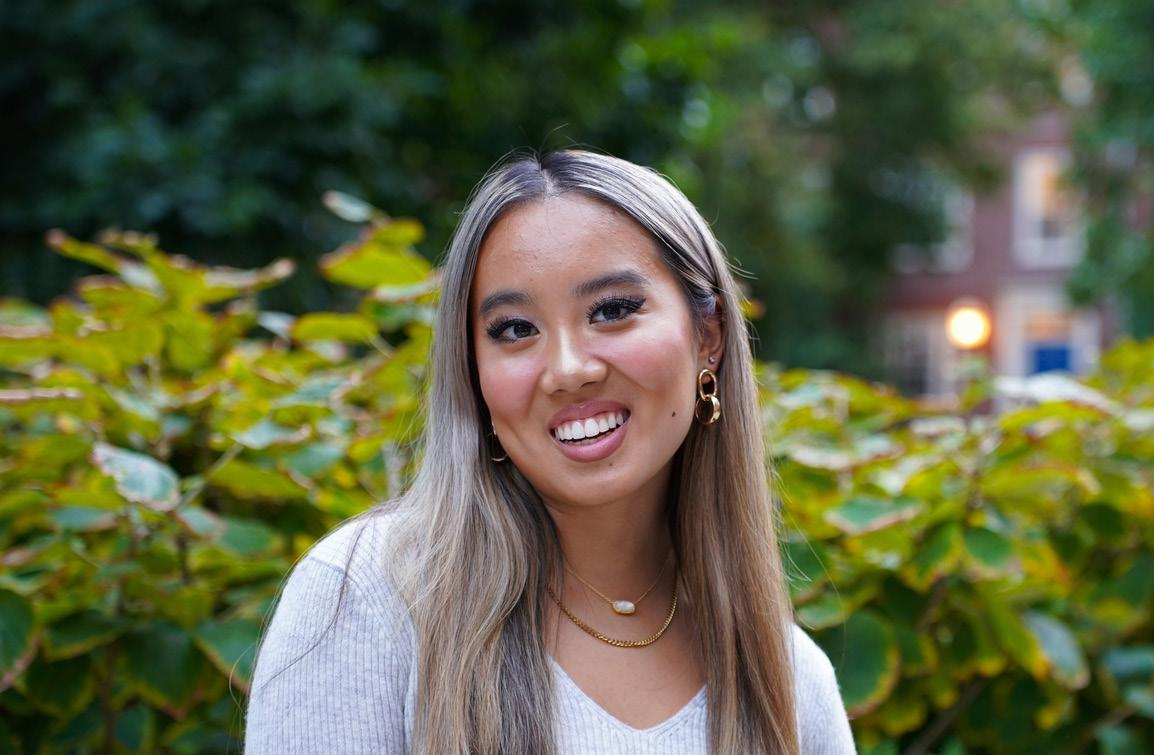
Zhang has previously made advertisements for brands such as Microsoft, Grammarly, and Tinder and says she is adamant about only working with brands if she uses their products or likes what they stand for.

Pham says that she sees social media as a business tool instead of just a personal platform.
But Hoskin, who has built her brand around college admissions advice, disagrees with this logic. “Whoever is saying that is kind of silly,” she says. “You know what you did and then you got in. So you can obviously be helpful.”
Still, beyond their personal admissions experiences, those with consulting businesses earn credibility through other means.
Pham agrees that Harvard students aren’t inherently good coaches, so she extensively researches elite admissions. “If I’m not working on my business or coaching my team or training people, I’m always learning about the admissions space,” she says. “In that sense, I’m a lot more confident in my ability to understand college admissions, because I’m not just bullshitting answers.”
(Hoskin’s TikTok bio also cites her work as an “Ex Harvard Interviewer.” She explains, “I had signed up to be an interviewer and did it for one or two students, and then I realized I had done enough of it and didn’t really have time for it. So I did briefly.”)
But in positioning themselves as experts, Hoskin and Pham might just be trying to meet the seemingly endless demand for admissions insight.
Even at the age of 18, Salazar was inundated with messages from high schoolers, college students, and Ph.D. candidates — all requesting admissions advice.
“I was like, ‘I have no idea how to get into med school, or any of these things,’” he says. “But just the idea of getting into Harvard gives you enough credibility to give advice to this whole slew of people.”
Many influencers respond to this attention by posting ‘stats’ videos where they list their high school courses, grades, test scores, and extracurricular activities.
“There’s a democratizing element of this, where if I want to talk about college admissions, I can share that in a free video that anybody can watch,” Fish says.
But for some desperate high schoolers, this isn’t enough — they want individualized advice.
Thompson says he tries to respond when followers ask him for essay help. “I’ll help them if I have the time to. I’ll do it for free.”
16 | PAGE
DESIGNED
BY
Beyond time constraints, Thompson sees a deeper conflict. “I don’t believe in charging people to get into a great school,” he says. “There are people who are really desperate, and I don’t want to take advantage of that.”
However, creators like Pham and Hoskin see the free advice they post on their channels as leveling the inequalities across college admissions.
Although some of their content is still behind a paywall, Pham says, “I think a lot of college admissions counseling businesses just target rich parents. That’s not what I’m trying to do. I think that just
And Matt Travaglini ’25, whose YouTube vlogs show daily life at the College, says he wants to “humanize Harvard.”
“I’m not creating legislation and curing cancer every day,” he says. “I’m going to my math class and getting a coffee, and I’m stressed about homework, like every other college student.”
In April, Rachel A. Richey ’27 posted a video joking that she was enrolling in a Harvard course titled “TikTok Rizz Party: An Analysis.”
Many of the video’s 3.4 million viewers missed the joke.
“I think a lot of college admissions counseling businesses just target rich parents.”
— Elise M. Pham ’26
“So many people were commenting on it, not understanding that it wasn’t real, and being like, ‘Harvard is falling off, I can’t believe they’re offering these classes, this education is a joke,’” Richey says.
She started to consider what impression of Harvard she might give her audience.
“Sometimes I get a little worried about how I portray Harvard,” she says. “Because I don’t want to get in trouble, but also I feel like it’s important for people to still take Harvard seriously.”
perpetuates a type of elite admissions.”
The range of influencers who haven’t taken the business route also see a purpose in their work.
“People do it for views, people do it for money as well, but if that’s the only thing you’re doing it for, then you’re obviously in it for the wrong reason,” Piltner says. “People who are not content creators at Harvard should realize that we have an underlying mission that is greater than that.”
Zhang, whose TikTok documents her experience leading the non-profit Cancer Kids First, says she “really wanted to dismantle the stigma around youth-led nonprofits.”
With her women’s basketball content, Turner says she hopes to bolster the reputation of Harvard athletics. “We are actually good at sports, we just happen to be smart as well,” she says.
XINYI C. ZHANG — CRIMSON DESIGNER
Richey’s concern is shared by other student influencers. As these students reach more and more outside viewers, they must decide either to uphold the glowing image many expect, or attempt to dismantle Harvard’s fairytale aura.
Hoskin, who takes the former approach, says she’s even doing the University’s brand a favor.
“Harvard should like when their students talk about them on social media — obviously in a glamorization, publicizing them in a positive light — which is all that I do, really,” Hoskin says. “It makes Harvard seem cooler — puts it on a pedestal, more so than it already is.”
According to Golden, though, it simply makes sense for some influencers — especially those who consult on elite college admissions — to glamorize Harvard.
“It’s lucrative for them to portray the school in a positive light,” Golden says.
“Because if you portray the school in a positive light, more people are going to want to get in.” And more Harvard applicants means more potential clients for admissions coaches.
Of course, not all students want to portray Harvard positively.
Thompson, who gained traction for a series of humorous interviewstyle videos like “Asking Black students how they got into Harvard,” says he is unafraid of making a critical video about aspects of the College that strike him as “crazy” or “insensitive.”
Thompson mentions videos showing his shock at his annual tuition bill and criticizing a special February undergraduate dining hall menu “inspired by Harriet Tubman’s travels in the American South.”
“Like, the tuition thing always gets me,” Thompson says. “I’m like, this is crazy, they’re insane for that. Or, they really had the audacity to serve a ‘slaveinspired’ meal.”
“I portray Harvard as a great place, but it’s also kind of comical,” he adds.
Travaglini says that though he hasn’t made much content critical of the University, he hopes his audience understands that he recognizes Harvard’s shortcomings. “It’s much easier to get on a camera and talk about the coffee you’re going to get than it is talking about protests, or the way that your friends have been treated poorly by administration,” he adds.
Especially after Harvard faced nationwide scrutiny this year over the resignation of former University President Claudine Gay and ensuing pro-Palestine campus protests, some influencers say it was important to them to discuss their view of the administration’s decisions.
Currently, Golden’s first “pinned” video has 10.5 million views and 2.7 million likes. It depicts her chanting in a crowd of more than 1,000 Harvard students walking out of May’s Commencement ceremony, in protest of the College’s decision to withhold diplomas from seniors who participated in a pro-Palestine Harvard Yard encampment.
“A lot of my family members who
followed me on TikTok, they were like, ‘You know Harvard’s stance on all this, and yet you’re still posting stuff that goes directly against that. Do you not worry that it’s going to affect you somehow?’”
Golden says. “I was like, ‘I think I see more of a value in putting that information out there, as opposed to just not saying anything — not doing anything — because I’m afraid of the risk.’ Especially since it was my last year.”
Golden says she hoped her videos provided contrast with the administration’s public statements, shaping the way people view Harvard by adding to the national narrative.
“CNN asked for the video, Daily Mail asked for the video — and I gave them all the rights and everything,” Golden says. “I feel like people think globally that the statements that Harvard is putting out is reflective of students’ views, and it’s not. It’s clearly not.” The College reversed the disciplinary sanctions in July.
Piltner says that influencers should not just create content for views or money, but for a deeper underlying mission.
Piltner says that influencers should not just create content for views or money, but for a deeper underlying mission. By Lotem L. Loeb
Piltner, who directly condemned the College’s disciplinary action against encampment protesters in a June YouTube video, says it was a “hard decision” to include criticism of the administration in her content.
“I didn’t want to make it seem like I was ignoring any issues that were happening on campus at the time,” Piltner says.
The social media portrayals of campus this year also shaped the impressions of some incoming students.
“Just because Harvard’s been in the news a lot this year, I think that plays a huge role in the perception of prospective students for sure,” Content creator Ahmed T. Eldeeb ’28 says of student influencers’ content.
Eldeeb adds that he watched content from Harvard students even before his admission to the College. Indeed, several influencers say they’ve heard from prospective students that their content got them excited about applying
to Harvard.
In a year where the word “Harvard” was extra clickable, the influencers became a sort of representative for the University.
Harvard’s Brand Ambassadors
Should Harvard be worried that uncensored and enormously popular social media content could impact their public image? Might all the filming on campus even violate Harvard’s campus use policies?
Of the influencers interviewed for this article, only three said they had ever been contacted by resident deans or administrators about taking videos down, and all for considerably specific or personal reasons.
According to a College spokesperson, administrators are not “actively scanning” students’ social media accounts, and will typically reach out to students about online content only when “issues are raised” with administrators first.
William A. Hu ’27, who makes content primarily about the video game Valorant, says one of his TikToks nearly landed him in administrative hot water.
“I got AdBoarded for being toxic in a video game. I’ve got some opps, bro, I’ve got some fucking haters,” Hu says.
Hu’s freshman resident dean reached out to him last November to discuss the video, though no further action was taken.
“I was like what? I’m not saying any slurs, I’m not saying anything particularly offensive, I’m just being a little angry at some people,’” Hu says. Since Hu spoke with his dean, he has “significantly” toned down the aggression in his livestreams.
In other words, despite the mountain of content that exists online about Harvard, any administrative response is largely muted.
Instead of cracking down on TikTokstyle representations of the University, as of November 2023, Harvard has begun generating their own college-life content on social media.
The College’s reels match the style of so much Harvard content — clips in Annenberg Hall, panning shots of foliage in the Yard, “#Harvard” in the caption.
But unlike most videos buoyed by the internet’s fascination with Harvard, some have fewer than 100 likes.
Welcome to @ harvardcrimsoncreators, an Instagram account created by the College’s ‘Social Media Street Team.’
Around eight undergraduates are employed by the Communications office as Crimson Creators. Paid $16 an hour, these students are required to make two to four videos each month on College accounts.
Yet if Crimson Creators is the College’s attempt to control its image online, it lacks the critical components for virality, according to several other influencers. Without a unifying personality, full freedom to lean into internet-friendly humor, or even the copyrighted audio clips that define TikTok trends, the account has only just over 800 followers.
But Sabrina Debrosse, the College’s senior assistant director of communications, isn’t worried at all. Apparently, the College is entirely unconcerned with followers and growth.
“I’m not creating content to go viral and for it to be picked up by any old Joe Shmoe,” says Debrosse, who oversees all College social media accounts. She wants current students to be the ones following and liking these posts because it’s “important that there is a channel dedicated to students while they are here.”
Debrosse says her job differs significantly from social media directors at smaller colleges where applications and enrollment are dropping.
“Harvard doesn’t need to be sold,” she says.
Eli C. Bostic ’27, who has made “day in the life” social media content for the Admissions Office’s instagram account as an intern, says “there’s not a lot of censorship” from the Office.
“You pretty much have free will,” he adds. “But of course, if I’m doing a day in my life, I’m not going to post 30 videos of me at a protest, like that’s just crazy.”
In terms of external student influencer content, Debrosse says criticism of Harvard is “fine.”
“It is important that people are critical of Harvard, because that criticism will
help us ultimately learn and grow, and so that’s fine,” Debrosse says.
Travaglini says the negative media has only brought “continued buy-in” to Harvard from curious viewers: “I guess it’s like that quote that’s like, ‘All press is good press.’”
Asked if she would become a content creator full-time, Cruz replies, “As much as this is fun, it’s not intellectually stimulating enough.”
Hu, who made a living as a gamer during his gap year before coming to Harvard, agrees.
“I legitimately cannot see myself doing this — being a creator, video gamer, whatever — 10 years down the line,” Hu says. “I have so much more to do.”
Like the other influencers interviewed for this article, Hu doesn’t see content creation as a long-term career.
Like the other influencers interviewed for this article, Hu doesn’t see content creation as a long-term career.
In fact, every influencer interviewed for this article doesn’t see content creation as a long-term career.
When they look beyond the Yard, these influencers might be forced to consider what being an influencer means outside of Harvard’s endless fountain of internet clout. Without overwhelming demand from scrambling high schoolers, they might start asking bigger questions.
“This is something I’ve struggled with more than anything on social media,” John Fish ’21-22 says. “Is this actually good for anyone involved?”
Looking back, Fish has some regrets.
“Having so many eyeballs on me in certain times in my life, especially being on campus, definitely influenced me as a person,” Fish says. “Sometimes I wish that I had had a more normal college experience.”
For Cruz, the draining part of college internet fame was not only editing and posting videos, but also consuming them — to the point where she deleted TikTok entirely for eight months.
“There’s tension with me being a producer of media, and then trying to
18 | PAGE DESIGNED BY XINYI C. ZHANG — CRIMSON DESIGNER
not consume so much of it,” she says. “I was just so fed up with being a mindless consumer and I wasn’t making the most of my life.”
Even if individual creators recognize the costs of making content, it doesn’t change the broader platform dynamics that incentivize attention-grabbing content.
“If you want people to watch all your videos, you should make really addicting content,” Fish states.
But Jack W. Schwab ’25, a noninfluencer who tries not to use social media at all to increase his productivity, says “I don’t think it’s immoral for somebody to become an influencer.”
He says the responsibility to regulate against addiction falls primarily on the consumers.
“I think if you give somebody that much of your time that’s on you, not on them,” Schwab says.
Whether or not these students bear the moral weight of the attention economy, becoming a Harvard influencer remains as alluring as ever.
Especially since — as LaPlante writes in a TikTok that has DJ Khaled’s “Major Bag Alert” playing in the background — “all [harvard students] have to do is make a tik tok and they’ll immediately go viral.”
Some freshmen, like Jenny Ng, are already taking advantage of this apparent loophole. “Every time I use the word ‘Harvard’ in any one of my TikToks, it gets over 10,000 views,” Ng says. “I might actually be the next Harvard influencer.”
Seemingly, the Class of 2028 has even more enthusiasm for influencing. “In my grade, I would say there’s a lot of people that have posted reaction videos and got like, a million views, and they’re riding on that wave of new followers,” Ng says.
And the Class of 2029? Well, it might have even more aspiring influencers.
“You can see it in elementary schools,” non-influencer Luke S. Schofield ’27 says. “Back when we were there, on career day they would ask, ‘What’s your dream career?’ and people would say an astronaut, police officer, whatever.”
“Now, people do say ‘Influencer,’” Schofield says. “It’s on the rise. I don’t know if it’s quite in college yet, but it’s going to come.”
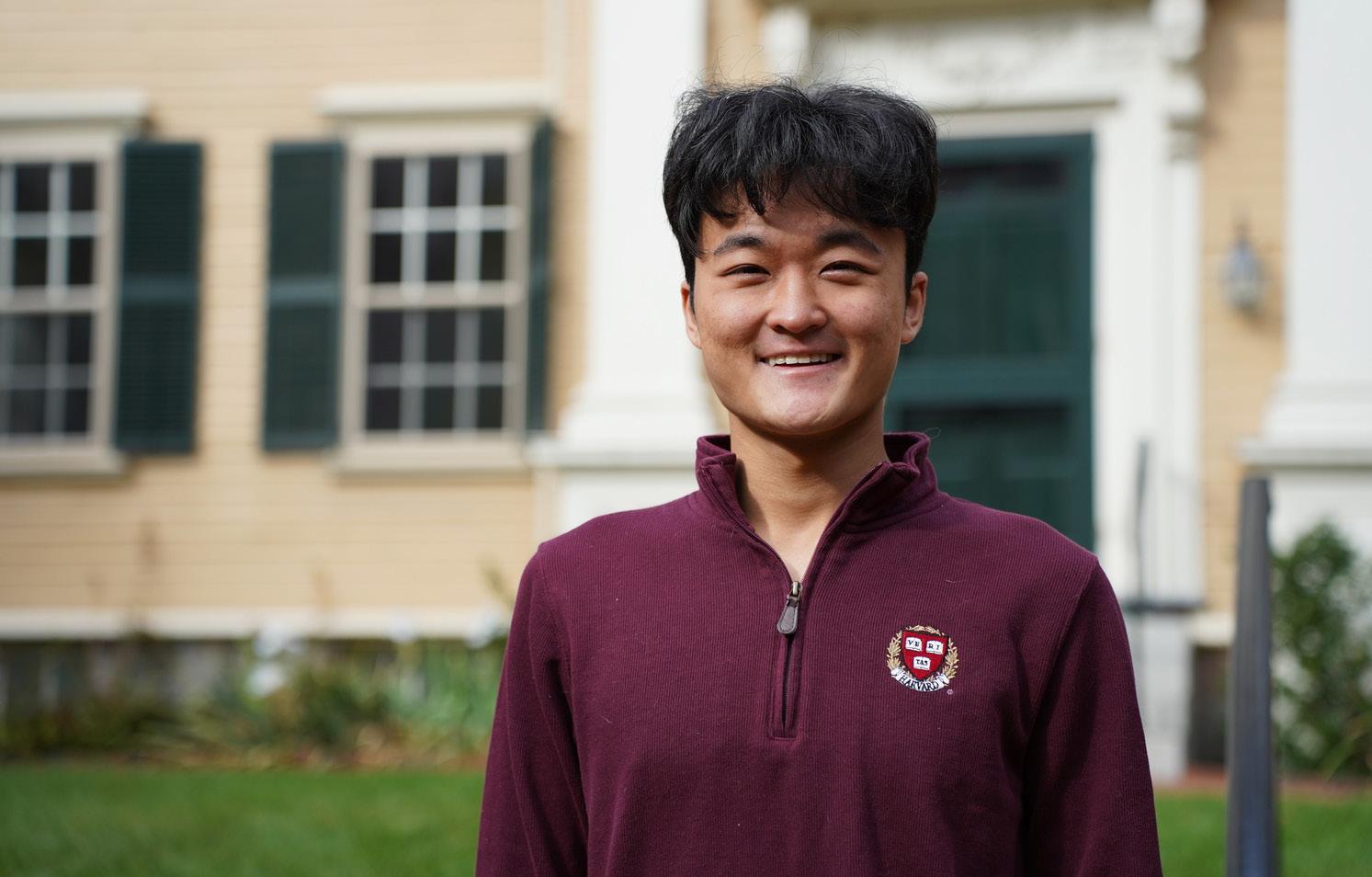
The sophomore makes content primarily about the video game Valorant. Like the other influencers interviewed for this article, Hu doesn’t see content creation as a long-term career.
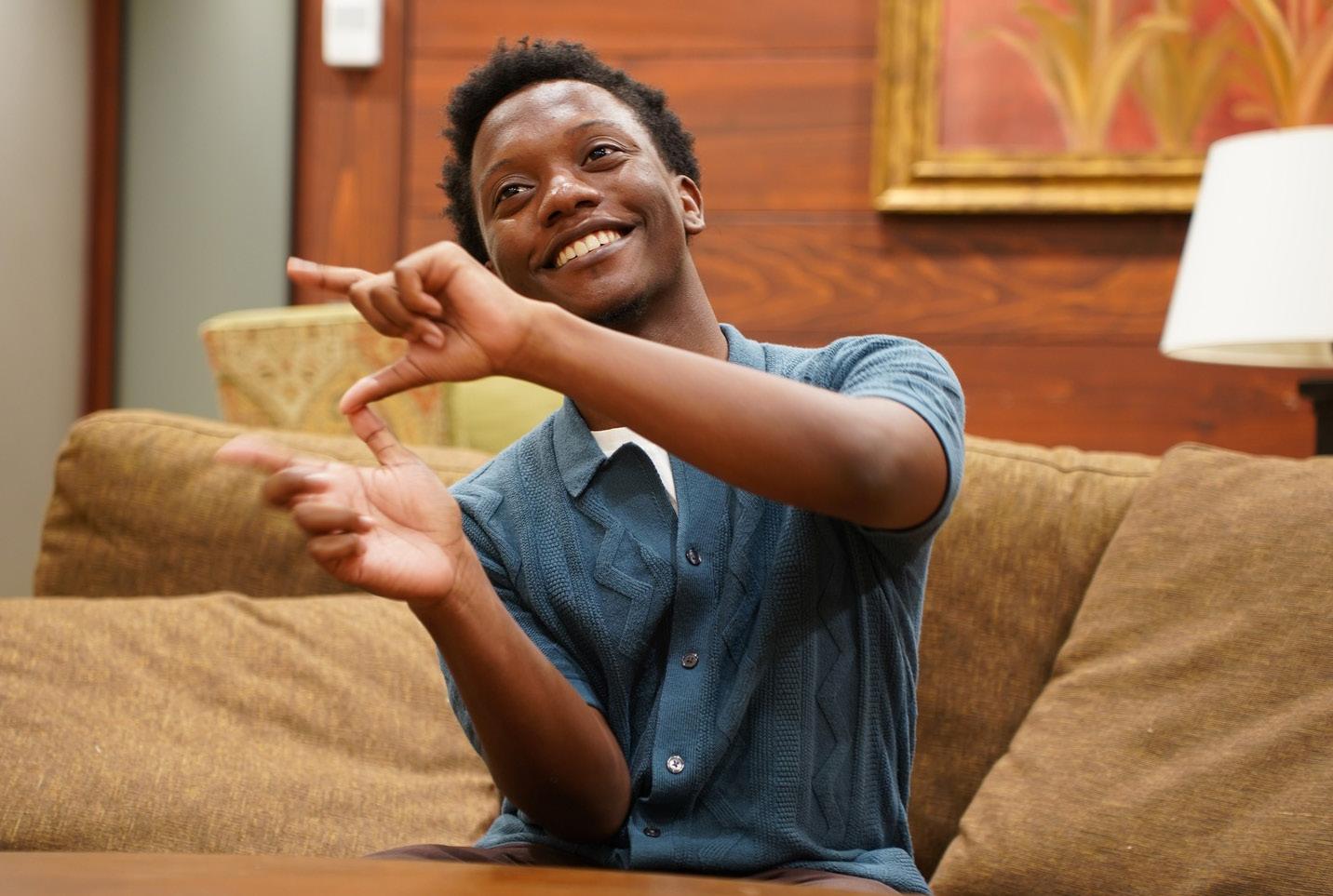
For Thompson, who has more than 32,000 TikTok followers, being true to himself is important to his content creation.
BY CAM E. KETTLES — CRIMSON PHOTOGRAPHER| 19
BY VIVIAN W. RONG
In the basement of Eliot House lies a creative haven: the photography darkroom. Next to the black-and-white walls bathed in red light, there is a door with a sign that reads “Come to the dark
side.” If one does, they will find a lab table in the center of the room with photographs covering the walls and hanging from hooks. Students wash out graduated cylinders and inspect the film, a process aptly named “wet photography.” Eliot House Faculty Dean David F. Elmer ’98 teaches this seminar, “Photography and Time,” which focuses on digital and film photography.
Elmer, a Classics professor with a focus on ancient Greek literature, was first introduced to photography in an eighth grade science course as a way to learn about chemistry concepts. There, he took interest in photography, printing, and developing, wishing for a darkroom in his family’s basement. Later, Elmer started learning more
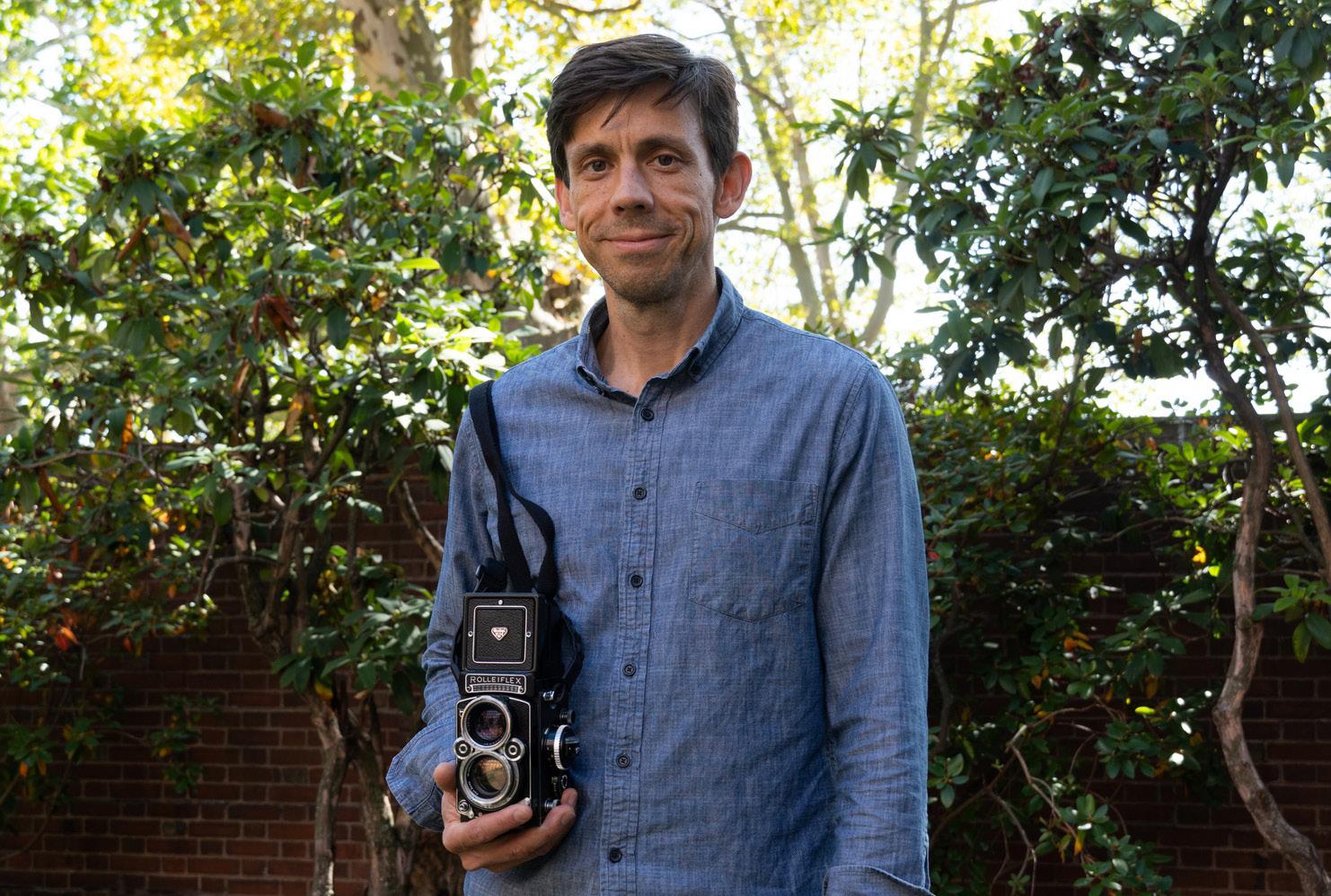
Eliot House Faculty Dean David F. Elmer ’98 teaches this seminar, “Photography and Time,” which focuses on digital and film photography.
ARWEN ZHANG — CRIMSON PHOTOGRAPHER
about the art form and took classes on darkroom work at the now-closed New England School of Photography. He even carried out his middle-school dream and built a darkroom in his home basement.
“For the past 10 years or so, I’ve been pursuing this as a hobby that gives me a lot of joy and satisfaction and a way to do something, create something, that is not directly connected with my professional life,” Elmer says.
When Elmer and Social Studies lecturer Bonnie Talbert stepped into the position of Eliot’s faculty deans earlier this year, they wanted to bring a piece of themselves into House life. For Elmer, sharing his passion for photography with the students was also a way to foster house community. So he decided to resurrect the abandoned Eliot darkroom and teach an Eliot house seminar on film photography.
“It’s very important to us to find ways to share who we are with the residents of Eliot House, and photography is a really important part of who I am at this moment in time,” he says.
Elmer’s class is the first house seminar to be offered in many years (though a 2022 class on the history of Harvard also took inspiration from the house seminar model). In the 1990s, houses regularly offered house seminars on various topics. Elmer believes the drop in the number of House seminars offered has to do with its unique class style. House seminars are meant to be taught in seminar style while also carrying significance for the House
as a whole. To offer his seminar, Elmer submitted a House seminar proposal to the College, centered around Eliot as well as academic goals for students. Framing his seminar as
“I would love to take these images and take them with us into swing housing as a reminder of who we are as a community.”
— David F. Elmer ‘98
a “kind of experiment,” Elmer hopes that the offering of his seminar leads to the offerings of many more in the
slates of the House’s roof saved from summer repair work as canvases for film photographs of the house. The photographs will be displayed in Eliot swing housing during renovation and brought back to the House after the process.
“This is an ambitious, ambitious goal, but we certainly have the capacity to do it in the darkroom,” Elmer says. “I would love to take those images and take them with us into swing housing as a reminder of who we are as a community.”
The darkroom, formerly used as a home base for Harvard Photography Club, has been with the House for decades. Prior to the invention of digital photography, many Houses like Lowell and Kirkland also had darkrooms. Film photography and darkroom work were fairly popular pastimes for many on campus. As digital photography gained popularity, Houses slowly lost their darkrooms, but Eliot’s remained and is now the last remaining darkroom open to students on the Harvard campus.

The seminar was also meant to capture the spirit of Eliot House before it undergoes renovation next year.
SARAH G. ERICKSON — CRIMSON PHOTOGRAPHER
future grounded in various topics and Houses.
The seminar was also meant to capture the spirit of Eliot House before it undergoes renovation next year. During House renovation, students live in swing housing. As a part of the seminar, Elmer asked students to use
Elmer sees this seminar as a way to open up the darkroom to a larger group of students. Those who made use of the darkroom decades earlier were passionate but small in number. Through teaching, Elmer hopes that more students will understand how to use the space.
“It’s the last space on campus available to students, and I think it’s important that we make it available to any student in the College who wants to learn this practice and make use of the space,” Elmer says.
BY CLARA E. SHAPIRO CRIMSON STAFF WRITER
Last Thursday, when I was on my usual twilight trudge around campus, ripping posters about “Funny Improv Shows” and “Free Boba” and “Mental Health Counseling” off of poles, I was stopped dead in my righteous rampage by a flier that, for once, made me smile. (It was a moment of weakness.
“Fish Funeral Friday,” read the flier, which was black. Finally, I thought. A

on the Quad Lawn, a disappointingly open and convivial locale. Peering closer at the flier, which depicted several mourners surrounding a fish, I noticed a smaller subtitle that said, “Drinks (inc. 21+), Snacks, Friends, and Camaraderie.” At least three of those four things are objectionable to me, but I brushed them off, and decided to go anyway.
Stomping across the Quad Lawn, I heard music floating towards me. In retrospect, I should have turned around right then. After all, it wasn’t my kind of music — cheerful Colombian pop with a catchy tune and lively beat like the pulse of a lovesick puppy. I caught awful words like “amor” and “corazón,” which translate in English to “my Kryptonite.” I was about to plow right into the group that lay sprawled out on the grass and suggest that instead of this offensive and irreligious music, they should DJ something more appropriate, such as “Ave Maria” or “Wind Beneath My Wings.” Thankfully, before I gave them a piece of my mind, I realized they weren’t

22 | PAGE DESIGNED BY OLIVIA W. ZHENG — CRIMSON DESIGNER
“I caught awful words like ‘amor’ and ‘corazón,’ which translate in English to ‘my Kryptonite.’”
— Clara E. Shapiro ’26
doing anything fish-related. There was another group nearby. I redirected my course.
I was pleased to see that most, but not all, of the mourners present were wearing black. That’s the best that can be said of them. Gathered around the picnic tables, Cabotians were immersed in all four of the things promised by the flier: Drinks (inc. 21+), Snacks, Friends, and Camaraderie. But it was even worse than I had expected. I was appalled to see a grab-bag of liquors, six-packs of Fanta, and the worst offense of all, so obscene that I almost upended the table: round platters of SUSHI! The salmon draped over the tops of the rolls struck me as so fresh, it could have been swimming alongside the deceased mere hours before. The whole affair was disgusting.
A few of the “mourners” I talked to didn’t even bother making excuses for themselves. “I’m really happy about this choice of sushi,” said a sinister character. “I feel like it’s fitting for the funeral of such a fish… He was just a disrespectful fish.”
When asked about this disturbing lack of remorse, she replied forthcomingly.
“Fish Funeral Friday,’ read the flier, which was black. Finally, I thought. A community event that’s up my dimly-lit alley.” — Clara E. Shapiro ’26
I asked her what on earth she meant, calling the deceased “disrespectful.”
She was forthcoming in her reply: “I’m the murderer,” she said. Her motive? “It was really rude. It called me some names while I was eating in the Cabot dining hall. So I grabbed it out with my bare hands, and let’s just say Remy took a little field trip to the Quad that day.”
I stumbled away, reeling as though I, too, had consumed Drinks (inc. 21+). My worst suspicions about human nature had been confirmed. What was this I had heard? I had been told that the fish died of “natural causes”! Several mourners present appeared to still be gobbling up this lie like a piece of tuna nigiri. “I saw the fish die,” said one attendee. “Just flopped around. It, like, turned upside down, and went up. It was a little sad.”
He made no mention of a sinister young woman reaching into the tank and seizing the fish with her bare hands. I would have asked about this, but it was time for the eulogy.
A young woman stood up — “Dear Friends, Cabotians, and Aquatic Enthusiasts,” she called out.
(I am none of these three things. I am neutral towards aquatic life at best.)
“We are gathered here today to mourn the loss of one beloved Cabot fish.” I
assumed, at this point, that she was the priest. In reality, she turned out to be a much lowlier authority: “My name is Aytana, and I am the Cabot ‘O-Fish-al.’” I shuddered at the pun. Not a minute into the eulogy, and she couldn’t refrain from wordplay? This did not bode well. She proceeded to make some trite remarks about “Cabot community,” as well as the moral excellence of this fish (“He was a fighter. He was a swimmer”).
But the worst was yet to come. As the applause — and, worse, laughter — was dissipating, another person rose to the makeshift
he would now give the fish an “o-FISHal” name: Tina Nina Spartina Marina Gibson Rebecca Bartholomew DeLorean Junior Esq. the 3rd. There were beers, and cheers. I found it all very unamusing. Disgusted, I retired to the shadowy solitude of the big tree where the fish, they claimed, had been laid to rest. I removed my phone from its cloth coffin, my pocket. Then I took this photo. You can’t see it, but the moon, hanging low in the sky, appeared to me like a fish’s enormous silver scale.
GRAPHICS BY OLIVIA W. ZHENG — CRIMSON DESIGNER


BY ANGELINA J. PARKER CRIMSON STAFF WRITER
About a month ago, I sat down to write a birthday letter to a girl I have been friends with for eight years. It’s not an unprecedented amount of time by any means, but eight years is still nearly half the length of my life. As I struggled to force the gravity of that feeling into words on a page, I found myself unable to stop thinking about a scene from the 2004 film “Shall We Dance?”
Besides starring one of the greatest gifts of 21st century cinema — otherwise known as Stanley Tucci — “Shall We Dance?” follows a couple struggling to resolve a conflict caused by secrecy after 20 years of an otherwise happy marriage. About halfway through the movie, the protagonist is asked why she thinks people choose to marry.
“We marry because we need a witness to our lives,” the protagonist, Beverly Clark, answers. “There’s a billion people on the planet... I mean, what does any one life really mean? But in a marriage, you’re promising to care about everything. The good things, the bad things, the terrible things, the mundane things. All of it, all of the time, every day.”
There is a hopeless romantic in me who dreams of the kind of marriage
Beverly describes, but the rest of me doesn’t believe that our lives’ only witnesses are found at the wedding altar. The family and friends that have been with me forever (or close enough to it, anyways) already witness everything. Nothing is kept completely secret — my most embarrassing mistakes, my ugliest reactions to heartbreak, my proudest victories. And when faced with uncomfortable displays of grief or jealousy-inducing accomplishments, bearing witness is the bravest act of love. The meaning of bearing witness first took shape when I was eight years old. It was the first and last time I ever saw my father cry. Two hours earlier, we got a call from Toronto — his mother’s yearslong battle with a tumor in her brain was over, and the tumor had won. My father put down the phone and told us what happened, but I didn’t understand. Death as a word was an unformed concept to me. What felt real was the wholly unrecognizable sight of his wet eyes and crumpled face.
Until that moment, life had been uncomplicated. My parents were flawless. Sure, we disagreed sometimes. I found their punishments unfair. But Mom always had a band-aid if I fell, and Dad always had an answer if I didn’t know how to do my math homework.
When I first saw my father’s tears, I wanted to hide. The image felt inherently
wrong, and my chest seized just looking at him. I quietly retreated to my own room.
Moments later, my mother followed, her face flushed cherry-red.
“Your father is grieving!” she demanded. “Go be there for him.”
In retrospect, it seemed absurdly selfish of me. My father had lost a parent, and I couldn’t handle a couple tears? But I was eight in a world where my male classmates shunned paper cuts for fear of appearing emasculated. I had never even seen an adult man cry before, and the moment was terrifying. Hearing someone tell me in words my grandmother was dead meant little. The sight of my father’s tears turned the world on its head.
“Being there” for my father, as my mother demanded, turned out to mean bearing witness to his pain when I simply didn’t want to. It meant confronting ugly truths about the nature of grief through the months of angry outbursts and despondent paralyzation that followed.
When someone I love is in pain — and I doubt I am alone in this — my instinct is to immediately become a problemsolver. I don’t want to witness grief or heartbreak, I want to make it go away. I want to write out a 12-step self-help plan and watch each bullet point get checked off.
What I didn’t realize at the time
“What I didn’t realize at the time was that love meant not alleviating my father’s grief, but watching it. ” — Angelina J. Parker ’27


moments of my life — are any less worthy of bearing witness to than whatever is to come in my future.
No spouse has witnessed me grow from child to adult, but you have. You’ve given me the greatest possible gift I could ever ask for in a friend: someone who has agreed to grow old with me, to witness my life in totality, and to cherish each moment we share along the way.
You see every job rejection, every breakup, and every abandoned dream. You stay anyway. You’ve watched me scramble from the lowest points of my life to where I am now, and I promise to continue standing by you too. Watching as your witness is the greatest honor I
And happy birthday again!
away in my heart, knowing that is the only proof of the moment I’ll ever get. Knowing that it is the only proof that matters.

BY KATE J. KAUFMAN CRIMSON STAFF WRITER
While scrolling through past entries in my Notes app, I recently found a text I’d drafted for a cousin. She had asked me, an unwitting authority, how to get into college. “Grades and test scores are great, but I think it is more important to show passion for your work,” I’d written. “Don’t just do extracurriculars to look good for colleges, do them because you actually care.”
It’s not necessarily bad advice — in fact, it’s the same advice that guided me when applying to college. Whenever I’m asked how I got into Harvard, I regurgitate everything I remember from binging SuperTutorTV videos and College Vine blogs as a high school sophomore. Inevitably, I use that monstrous word: PASSION.
The college application process taught me that a passion was my single most important possession, and I embodied that goal. I built my life around mental health advocacy — initiating elaborate passion projects, rambling in cover letters about my “life calling,” and eventually submitting a Common App essay dripping with evidence of “just how much I care.”
Let’s return to my Notes app and scroll back to 2021 and 2022 — critical years in the development of the advocacy work that would eventually lead to Ivy League admission.
Though you’d expect my notes to reflect the deep, developed passion I would eventually focus on in my personal essays, the opposite is true. This period was instead chronicled by a written battle to hold onto my basic interests and feelings through dozens of lists with titles such as “artists I find interesting,” “songs I’ve cried to,” and “things I want to
write about.”
I vividly remember making these lists to fend off a growling fear that I didn’t care about anything at all. I was endlessly beating myself up for scrolling on Instagram, reading novels, or watching movies instead of saving the world. After all, if I didn’t always want to focus on my activism, I must have not actually cared about it.
Much of this doubt stemmed from the origin of my passion for mental health. As vehemently as I would have denied it in high school, my decision to become an activist was largely for the sake of college admissions.
The deepest, darkest secret of my Notes app (which I long ago deleted) was a running list titled something like “topics I could care about” — climate change, women’s rights, access to education, food insecurity, etc. Despite the backstory I frequently told explaining why I was destined for mental health advocacy, my Notes app contained the shameful reality: In many ways, my supposed passion was the result of an arbitrary choice.
must be all or nothing. A passion is a life mission, a calling, a higher purpose. It brings to mind the obsessed artists and activists — think Michelangelo, Greta Thunberg, Jonathan Larson — who “can’t not” do what they are doing. It’s the Louis Armstrong type, the people who say things like: “My whole life, my whole soul, my whole spirit is to blow that horn.”
giants as my standard, trying to have a passion
“I vividly remember making these lists to fend off a growling fear that I didn’t care about anythin\g at all.”
— Kate J. Kaufman ’27
was self-destructive. Passion was a measuring stick I used to condemn everything I accomplished, if not for its miniscule impact, then for its impure motivations. Then, it became a weapon I wielded to compare myself against

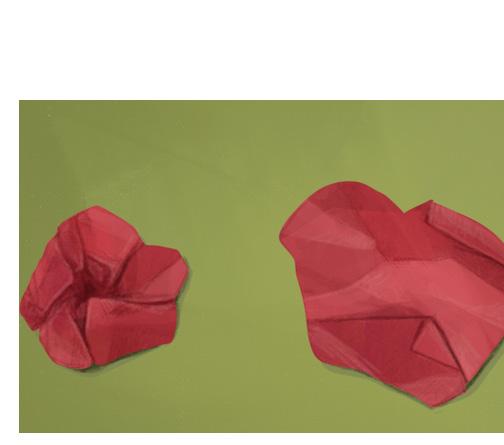

whether I wanted to spend the rest of my life in mental health advocacy.
Surrounded by people who claimed their career paths and callings with such certainty, I was terrified to admit that I wasn’t sure.
Naturally, the imposter syndrome set in. Everyone else seemed perfectly motivated and ceaselessly driven towards their goal. How was it that I simply could not muster enough time, energy, and creativity to dedicate my life towards
I soon returned to my Notes app. Once again, I tried to convince myself that mental health advocacy was my life calling. Then, I tried to convince myself that I was capable of passion at all. I made pros-and-cons lists for different potential concentrations, wrote down classes that I might enjoy, and kept track of extracurricular opportunities I ought
But making these lists wasn’t as cathartic as it used to be. Opening a new note for the hundredth time, my vision would shift from the satisfying, neutral formatting of the Notes app to my own
fighting for, my notes collection became something new: proof that I care. The true throughline was passion — relentless, expansive, and inextinguishable. If I was passionate about all these topics, then my imperfect commitment to one passion was not a reflection on my ability to be passionate as a whole.
The difference between having a passion and being passionate is subtle,
“Being passionate is a characteristic that can describe me so long as I choose it.”
— Kate J. Kaufman ’27
but pulling the two apart has felt significant.
Unlike the Thunberg-esque dedication to a singular passion, being passionate is impossible to quantify or compare. Being passionate is a characteristic that can describe me so long as I choose it.
I am passionate about many things,
When my goal is to be passionate, Harvard stops being the place where passion goes to die. Harvard’s emphasis on academic breadth — which I used to see as contrary to the development of my singular passion — has actually made me increasingly inspired, curious, and engaged. If I let it, Harvard can help me find fulfillment as a passionate person instead of finding reason to doubt my passion.
As I navigate through campus this year, I am trying to unlearn the belief that those with a particular passion are superior. I want to celebrate passionate people (which are abundant at Harvard), instead of lauding only those whose passion is minutely concentrated.
Of course, I sometimes still wish for a singular passion that could tell me what career to have, class to take, and summer internship to apply for. But instead of waiting to find what my “whole spirit” was made to do, I’m focused on being someone who cares deeply — a description that doesn’t need to be suffixed by “about X issue” or “because of Y topic.”
Changing the way I define passion pushes me to be the person I know I want to be, not just do the things I think I want






